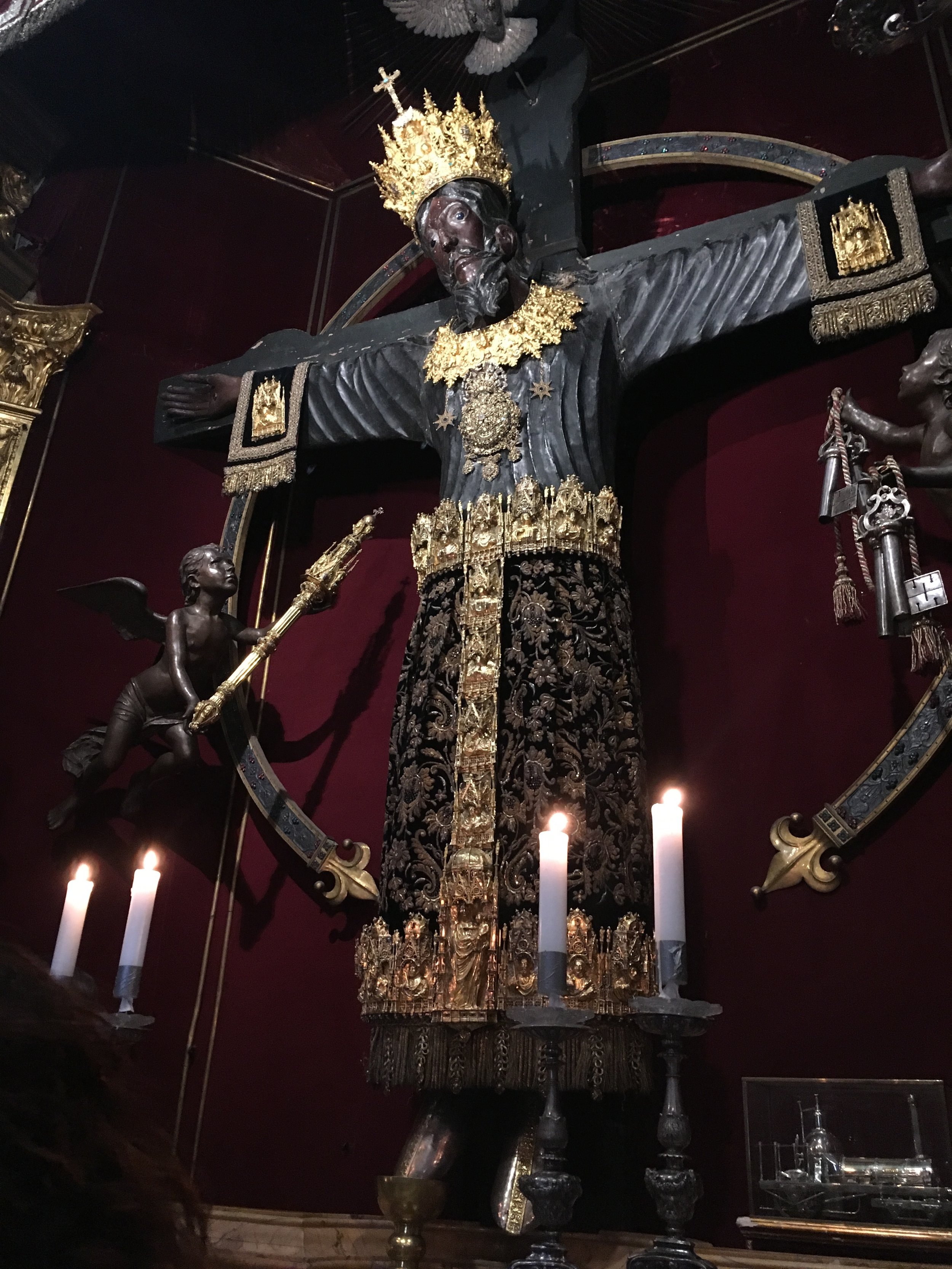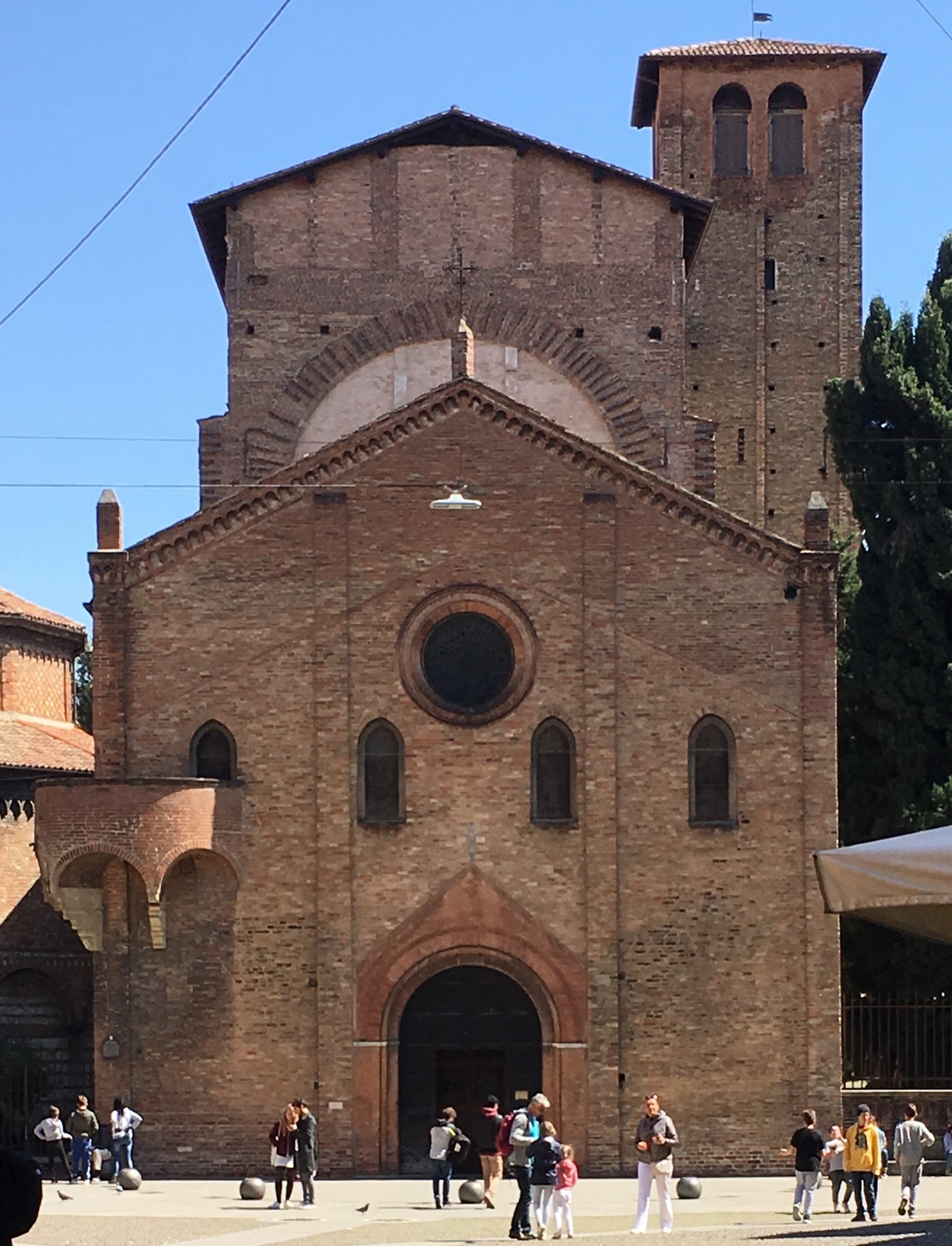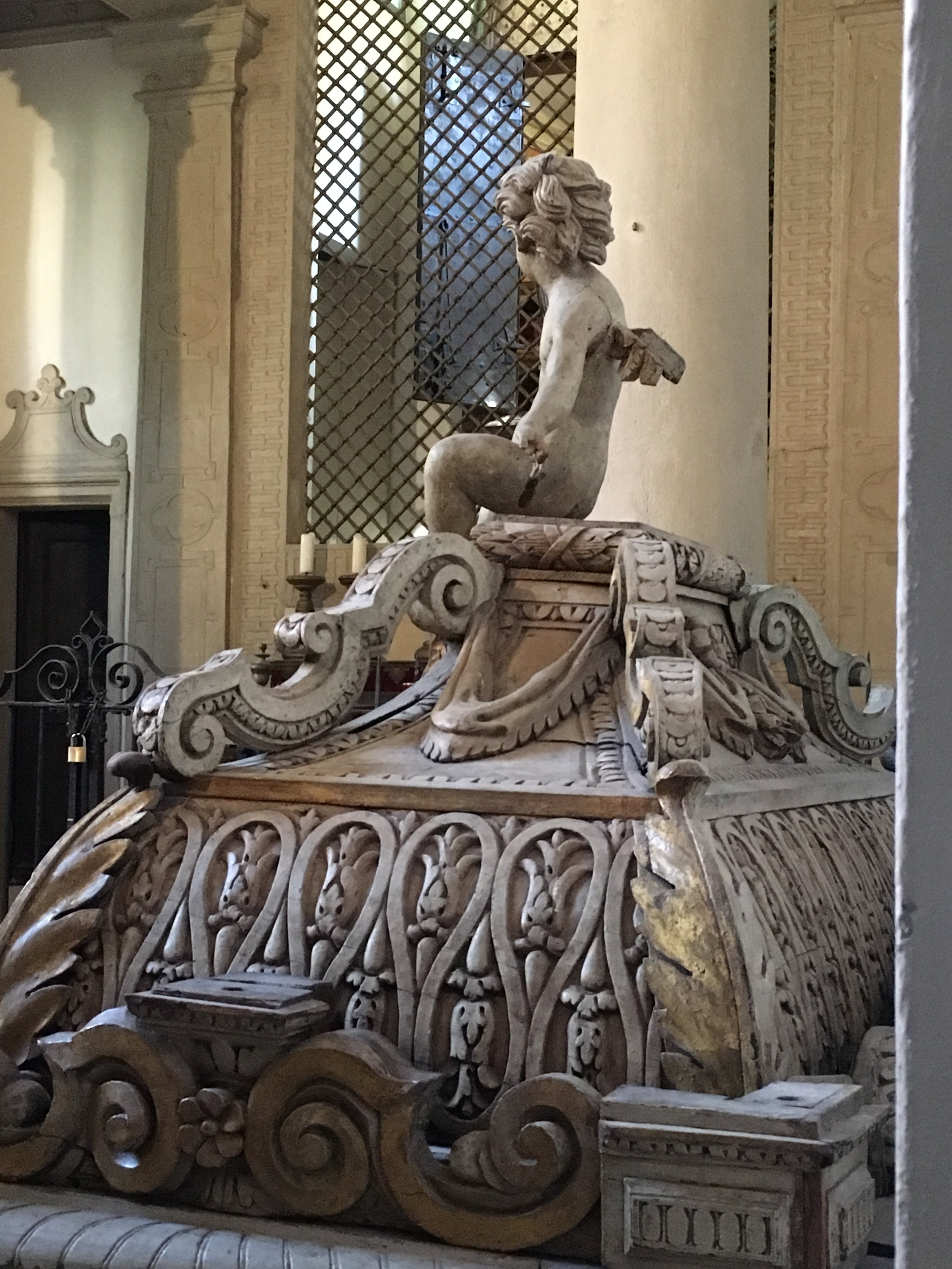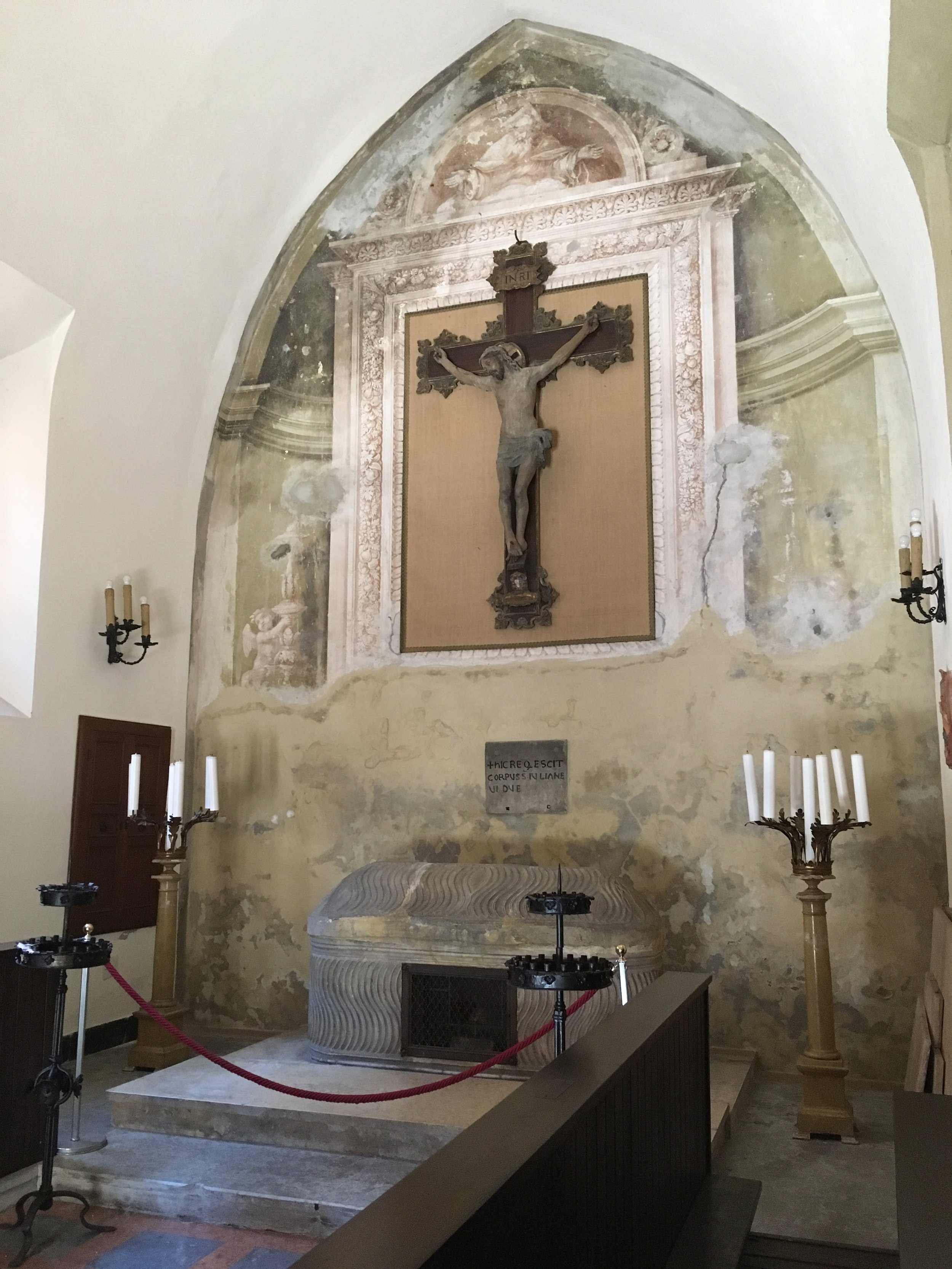The Legend of the Volto Santo (Holy Face)
This painting, in the church of San Frediano, depicts the arrival of the Volto Santo, in an ox drawn cart, to Lucca.
Italy is a country full of mysterious legends. This is certainly true in Lucca - there are legends about deals made with the devil, of a saintly housekeeper and her miracle, of stone pillars mysteriously bent but not broken, of rivers diverted by prayer. Not far from Lucca is a stone bridge supposedly built with help from the devil himself. Fascinating!
Perhaps the most important legend in Lucca is that of the Volto Santo (Holy Face), a wooden crucifix said to be carved by Nicodemus shortly after the resurrection of Christ. As the legend goes, Nicodemus carved the body of Christ, but fell asleep before carving the face. When he awoke, the face was miraculously completed. The crucifix was then hidden for some 700 years at which time it was discovered, loaded onto an unmanned ship, set to sea, and eventually landed on the coast of Italy. From there, a cart steered only by oxen brought the crucifix (another miracle) to Lucca where it has remained ever since. Many miracles have been associated with the crucifix and pilgrims traveling the Via Francigena, between Rome and Canterbury, often included a stop in Lucca to see the Volto Santo.
The Volto Santo crucifix, clad in gold vestements for the Santa Croce Festival, Lucca, Italy.
Today, this unique work of art is housed in a small gated chapel within the San Martino cathedral and has a dedicated celebration, the Festival of Santa Croce (Holy Cross), held every year in mid-September. This is the most important festival of the year in Lucca and during this time the Christ figure on the crucifix is dressed in gold vestments, including a gold crown, collar, belt, and shoes. It is also the one time of year when the gates to the chapel are opened, allowing people to pass through right in front of the crucifix.
Candles light the buildings for the Luminaria di Santa Croce Festival.
Luminaria light Piazza San Michele, Sept 2016.
The highlight of the Santa Croce festival takes place on the night of September 13th with a stunningly beautiful procession in which luminaria (candles) outline the windows and arches of the buildings along the route. The procession includes townspeople, priests and bishops, the misericordia and red cross, community leaders, school children, people in medieval costumes, musicians and singers. Many carry candles, torches, or other religious objects. There is also a special mass in the cathedral the following day.
The candle lit procession is spectacular to see.
I was fortunate to be in Lucca for this year's Luminaria di Santa Croce. Whether here for the history, religious significance, or sheer beauty of this event, it is a moving experience to witness a procession whose history reaches back to medieval times. Post by JMB
Some of the marchers are dressed in medieval costume.













